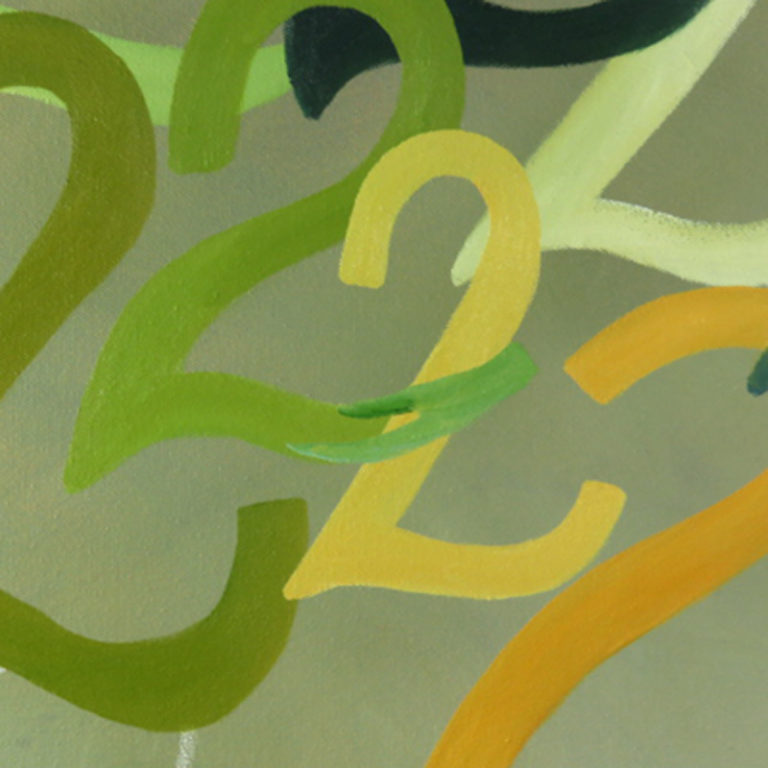2 is not 3 – Detail

Oil on Canvas, 91 x 122 cm
As a writer who grieves the progressive absence of handwriting, I have included letters, numbers and graphic symbols in some of my themes.
Both letters and numbers reveal and conceal cultural histories. We are collectively losing the haptic knowledge of cursive writing—the discipline and repetition required to achieve mastery is more and more absent in a digital age. An opportunity opens for an artist to step into this abandoned cultural space and create a new lexis.
What are numbers? For Plato, they were things existing in a realm beyond our awareness, beyond reality, in a realm only accessible by the intellect: heaven. He said that numbers represent knowledge; that our relationship to numbers is mysterious and cannot be explained. Number theorists dismiss this view. They insist that knowledge about numbers comes solely from practising mathematics; they define numbers as abstractions, ideas, fictional mathematical objects, as a theorem—to be used without going into philosophical questions.
Besides Platonists and mathematicians there are numerologists. They give meaning and status to numbers. Most of us do that, mainly unconsciously. Think of the number 13: what does it mean? To different people? Different cultures? As a teenager, I was obsessed with Tarot cards, therefore the numbers 2 and 3 carry the meaning of the major arcanas “The High Priestess” and “The Empress”. In this artwork I am depicting the words for ‘two’ in German (zwei) and in French (trois), otherwise the numbers 2 and 3 are the primary artistic component. By using a canvas painted in ‘olive drab’ and writing the numbers in layers, I have created a playful palimpsest, conjuring up ambiguous recollections of chalk dust and blackboards.